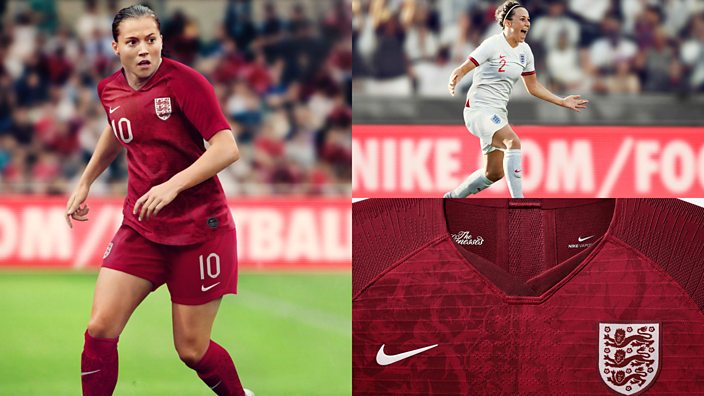Women’s World Cup: How brands are changing the game
The Women’s FIFA World Cup kicks off in France next month and it’s set to be the most watched edition yet. More than 720,000 tickets have already been sold for the tournament, beating the number sold at this stage for the World Cup in Canada in 2015 (source: BBC).
Many brands are set to capitalise on the popularity of this year’s competition. With the help of our emotional ad data and some insights from the UnrulyEQ Insight team, and our friends over at talkSPORT, we’ll paint a picture of the audience for women’s football, and what emotions brands should look to evoke to connect to audiences.
To help us understand the emotions that engage football fans, we ran two of the most popular football ads through our emotional testing and targeting tool UnrulyEQ.
Go!
The first, an extremely popular ad from McDonald’s entitled ‘Gol!’ helped the fast-food chain promote their sponsorship of the FIFA World Cup in Brazil.
When looking at viewer responses to the ad, we found that high levels of Amazement, Happiness and Warmth were present across both genders. Showing that feats of sporting skill, in combination with a sense of unity, are an effective way to resonate with audiences no matter their gender.
Fan Academy
Another football ad that had a very strong intense emotional response was Carlsberg’s ‘Fan Academy’. This ad promoted English culture around football, allowing viewers to connect with the ad whether they were football fans or not. The video resonated strongly with most viewers.
This England-centric ad successfully provoked intense emotional responses across both genders in spite of the ad predominantly featuring men. While males were more likely to feel proud and inspired by the patriotic (if somewhat bizarre) approach, females were more likely to laugh at the carousel of exaggerated and stereotypical male football fans on display.
We posed this question of gender in football audiences to talkSPORT’s Deputy Head, Laurie Palacio; “Our audience is a sports-loving audience, and it won’t shift depending on whether we air a men’s or women’s football game. We may gain some new listeners during the Women’s World Cup but from our experience, we won’t see a dramatically different audience for the Women’s World Cup compared to when we air the men’s.
“Women’s football has reached a standard that people want to follow, and with a number of competitions now being aired and with the Man U and Spurs teams having recently been promoted, I see it becoming more and more popular.”
This Girl Can
As well as looking at football ads, we also tested two popular ads that feature sportswomen.
Sport England produced one of the most highly accoladed campaigns in 2015 with ‘This Girl Can’.
By showcasing women in an authentic and empowering light, the ad drove positive emotions and favourability amongst viewers. It saw a strong emotional response among women, led by noticeable Inspiration, Happiness and Pride; thanks to its highly relatable and authentic narrative.
Brands play big
When Nike released an ad entitled ‘Dream Crazier’. It saw drastic differences in response between the two genders. Female viewers had a much stronger positive reaction and more felt favourable towards Nike having watched the video.
Both ads feature incredible sportswomen who have pushed themselves to their limits in order to be the best. Laurie believes that the shift in thinking towards female sportswomen is one of the big driving factors behind the popularity of Women’s football.
“Ten years ago, if we were to have a female football pundit appear on our show we would receive a lot of backlash from our audience, and airing a women’s football was unheard of. Now that we’ve moved forward as a nation, these views have changed. Women’s football has reached an incredible level, at talkSPORT we’re broadcasting the entire tournament and running a Super League show dedicated to the competition, as we believe it deserves the coverage that it’s earnt.
“We’ve seen global brands across numerous industries including Barclays, Boots and Nike, all run campaigns leading up to the competition.
For instance, Adidas and Nike have created new football kits, specifically for the Women’s teams, rather than having them the same as the men’s. This is a huge shift in brands’ thinking and shows just how popular they believe the competition is going to be.”

It’s interesting to note that in the ads featuring sportswomen, and in the football ads we tested, the highest scoring emotions were the same; Amazement, Inspiration, Happiness and Pride. This confirms Laurie’s thoughts that audiences for men’s and women’s sports don’t differ greatly, they look similar no matter what gender is playing.
Unruly’s Insight & Solutions Manager, Alex Maguire, believes that brands will use a number of tactics in order to stand out during this competition. According to Maguire, brands will use amazement or inspiration to appeal to the ‘inner child’ in viewers who always dreamed of playing professionally. He continues, “Brands will focus on the togetherness of football, and how it transcends borders, demographics and genders. You can expect to see them bring Happiness and Hilarity – possibly by using key moments in football history or famous anecdotes, and they’ll look to enhance those emotions by reintroducing those memorable moments.”
